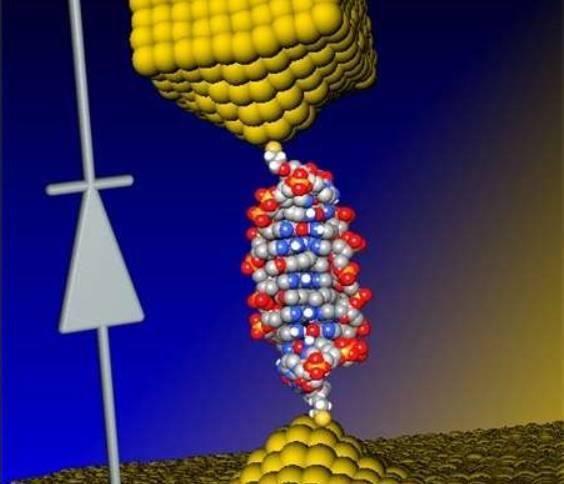
The University of Georgia, in collaboration with researchers from Ben Gurion University of The Negev (BGU) in Israel, has developed what is claimed to be the world's smallest diode using DNA molecules, with actual dimensions only the size of a single molecule. The research on "Molecular Rectifiers Composed of DNA with High Rectification Ratio by Embedding" was published in the latest issue of the journal Nature Chemistry. The article details how a multinational research team composed of Israeli and American researchers utilized the predictability, diversity, and programmability of DNA to design the first single-molecule electronic component.
Researchers constructed a DNA molecular rectifier by embedding small molecules (Coralyne) into specific positions of 11 pairs of custom double helix DNA. The inspiration for the birth of the world's smallest diode comes from the DNA double helice_EMCOL_1

According to the current voltage curve of DNA Coralyne molecule connection measurement, a significant rectification effect with a rectification rate of about 15 was unexpectedly observed at a voltage of 1.1V, which is different from the intuitively assumed symmetrical molecular structure on the surface.
Researchers found that the spatial asymmetry caused by the electronic state distribution of Coralyne leads to the observed rectification effect by calculating parameters based on non-equilibrium Green's function modes and density functional theory.
In the process of developing molecular electronic components, creating and characterizing the world's smallest diode can be considered an important milestone, "said Yoni Dubi, a professor in the Department of Chemistry at BGU and a researcher at the Ilse Katz Nanotechnology Center." It gives us a new perspective on electron transport mechanisms. "The resulting nanoscale diode can operate like a gas valve, facilitating the flow of electrons in a single direction. These combinations of nanoscale diodes or molecules have characteristics similar to traditional electronic components such as wires, transistors, or diodes.
Researchers are also optimistic about the development potential of this molecular electron, which is expected to become a path to break through Moore's Law and surpass the limits of traditional silicon-based semiconductors.